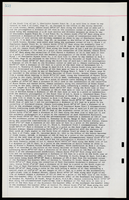Search the Special Collections and Archives Portal
Search Results
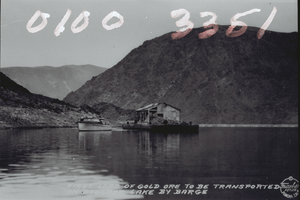
Film transparency of a postcard showing a boat transporting gold ore on Lake Mead, circa late 1930s
Date
Archival Collection
Description
Image
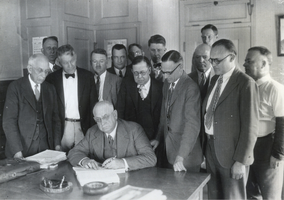
Photograph of several officials signing the contract to construct Hoover Dam, April 1931
Date
Archival Collection
Description
Image

Madeline Taylor Knighten interview, November 6, 1974: transcript
Date
Archival Collection
Description
On November 6, 1974, collector Jay Brewer interviewed Madeline Taylor Knighten (born July 7th, 1907 in Chanute, Kansas) at her home in Boulder City, Nevada. In the interview, Madeline Taylor Knighten discusses her life in the early days of Boulder City, Nevada. She also speaks about her husband’s work in the Green Hut Café, as well as in diamond drilling.
Text

Transcript of interview with Betty Ham Dokter by Roger Jablonski, February 27, 1977
Date
Archival Collection
Description
On February 27, 1977, Roger Jablonski interviewed Betty Ham Dokter (born 1922 in Las Vegas, Nevada) about her life in Southern Nevada. Dokter first talks about her upbringing and education in Las Vegas before describing church activity and the first casino properties that were built. She later talks about presidential visits, economic changes in Nevada, the construction of Hoover Dam, and some of the social changes in Las Vegas. The latter part of the interview covers the topics of racial minorities, environmental changes, early grocery stores and movie theaters, and social clubs. The interview concludes with a brief discussion on Mt. Charleston.
Text

Transcript of interview with Lomie Heard by Stephen Singer, February 9, 1980
Date
Archival Collection
Description
On February 9, 1980, collector Stephen M. Singer interviewed schoolteacher, Lomie Heard (born January 22nd, 1906 in Carlsbad, New Mexico) in her home in Las Vegas, Nevada. This interview covers education over the span of thirty years, and includes an overview on the building of the University of Nevada Las Vegas. Also discussed during this interview: Nellis Air Force Base, jet airplanes at Nellis, military families, and the Nevada Test Site.
Text

Transcript of interview with Ralph Daly by Charles Malkowski, February 25, 1977
Date
Archival Collection
Description
Text
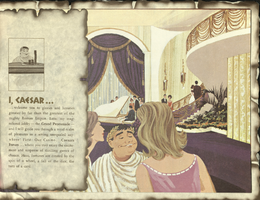
Booklet, I, Caesar, Invite You..., from Caesars Palace, circa 1966
Date
Archival Collection
Description
Stylized guide to the services and amenities at Caesars Palace. Each entry is depicted with colored drawing of a cartoon Caesar in various locations in the resort/hotel.
Text
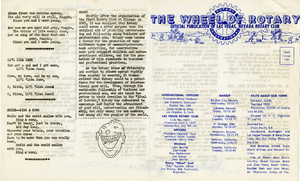
The Wheel of Rotary Las Vegas Rotary Club newsletter, August 18, 1949
Date
Archival Collection
Description
Text
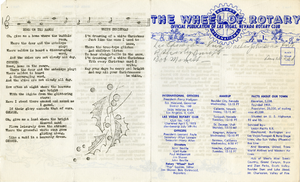
The Wheel of Rotary Las Vegas Rotary Club newsletter, December 15, 1949
Date
Archival Collection
Description
Text

